|
One of the questions I am often asked - especially by former students setting out to write their own drill for the first time - is: "How do I write for my band when it's this small?" After good-naturedly reminding them that we discussed this very issue in our Marching Band Procedures courses "back in the day," I usually chat with them about strategies that have worked for me when designing for smaller, younger, or less experienced groups.
Over the years, I’ve written drill for ensembles as large as 400 members and as small as 26. Both ends of that spectrum come with their own unique challenges and rewards, but designing for smaller groups requires a completely different mindset, one that balances visual impact, musicality, and achievable staging for limited numbers. Since drill-writing season is fast approaching, I thought I’d share a few insights and tips for those of you writing drill for small marching bands. Whether you’re a first-timer or a seasoned designer working with a newer program, these ideas should help get the creative gears turning and help anyone who might be struggling to find a style that works with their own small/young groups. And hey, if you’d rather not go it alone, I’m always available to write your drill for you. Check out my portfolio and send me a message. I'll be happy to chat with you about writing your marching band's drill this season. Now, let’s get into the tips for designing drill for smaller or younger bands… The Basics of Drill Design
Simplicity Wins
This one took me a long time to really learn: Keep. It. Simple. Not every set has to be flashy or complex to make an impact. In fact, some of the most effective drill I have written uses simplicity as a strength. Clean, purposeful staging often lands harder than constant movement ever could. When you are writing for a small or developing band, simplicity isn't just a stylistic choice, it's a strategic one. Giving your students a few moments of less demanding movement provides visual and musical “breathers” that help with performance quality. Not every set needs to be a big reveal. Sometimes, the smartest design move is to keep things readable, intentional, and (most importantly) achievable. Your band will execute better, and your audience will appreciate the clarity. Shape and Form Choosing the right types of forms can make or break your visual program, especially when you are writing for a small band. Each style of form carries its own strengths, challenges, and visual impact. Here’s a breakdown of the major types and how to use them effectively:
With some of those basics of drill design out of the way, let's talk about issues encountered when writing specifically for smaller or younger bands. Writing Specifics for Smaller Bands
GroupThink
When you are designing drill for a smaller ensemble, section cohesion is everything. Keeping sections together - winds, percussion, and color guard - helps reinforce musical confidence and visual clarity. Even within those groups, keeping similar instruments close can make a noticeable difference, both musically and visually. Yes, we all know to keep high brass near high brass, low brass near low brass...but don’t stop there. If you are familiar with the score (and you should be), you can group instruments that play similar musical roles, even if they aren't technically in the same section. For example, you can combine mellophones with alto saxophones, or low brass with tenor saxes, or trumpets with piccolos/flutes/clarinets if they share similar musical material at any given point. When instruments playing the same material are staged near each other, you boost ensemble confidence and clean up the sound. Plus, it gives you a more visually homogenous look, which is always a win for small bands trying to maximize their on-field presence. Careful drill writing that reinforces the score? That's where small bands can really shine. The Power Zone If there's one drill design principle that matters most for smaller or less experienced bands, it’s this: Stay in the (Power) Zone. Top-tier BOA bands and DCI corps can spread coast-to-coast across the field and still deliver musical impact, ensemble cohesion, and clean visuals. Smaller groups? Not so much. The wider you spread them, the more you risk losing projection, clarity, and control. The Power Zone (roughly the middle 30 yards of the field, centered around the front hash and the 50-yard line) is your best friend. It's where your band will sound fullest, stay together most easily, and connect visually with the audience. Pulling too far outside this zone usually results in watered-down sound and shaky ensemble timing. Don't mistake the “power zone” for a “boring box.” A creative drill designer can still work plenty of magic within this area. You can create dynamic staging, layered impact points, and strong visual moments, all while keeping the band positioned for success. Plus, by keeping performers in the audience's primary sight lines, your best moments won't get lost in the corners of the field. It's all about doing more with less, and making sure your band always plays (and looks) bigger than it is.
The Power Zone
Intervals
When designing for a small band, interval size matters more than you might think. Too tight, and your band looks cramped, too wide, and you risk losing musical cohesion. So what's the magic number? Three. 2-step intervals often make the group look smaller than it actually is. 2-step is visually compact, but not exactly impressive from the stands. 4-step intervals can make your band look larger, but can spread your winds too far apart, especially in curvilinear or symmetrical forms. That often leads to phasing, lack of ensemble confidence, and weaker musical impact. 3-step intervals hit the sweet spot. They give your drill a more expansive, open look while keeping your players close enough to stay together musically. This interval works wonderfully in curvilinear forms, where flow and spacing are key. It offers the best of both worlds: a bigger visual footprint without sacrificing cohesion (or power). In short? If you want your small band to look and sound stronger, 3-step interval spacing is the way to go. You can experiment with using other intervals: I've used a 2.5-step interval in the past, to mixed results. Check out the examples below:
While 3-step intervals are great for curvilinear forms and keeping smaller bands tight without looking cramped, they don't work quite as well in geometric shapes or traditional fronts. Why? Simple: they break the natural flow of the “On, 2 Off, or In Between” (O2OIB) alignment method that we've taught students forever. This simple spacing system has made it easy for decades of performers to find their place on the standard 8-to-5 grid, and 3-step intervals throw that off just enough to cause problems in fronts and precise forms.
Instead, when writing geometric shapes, fronts, or linear forms, go with 2-step intervals for tight, powerful formations that maintain cohesion, or 4-step intervals for broader coverage and a more expansive visual look (provided it does not spread your band too far apart). Both of these options align naturally with the 8-to-5 grid, making it easier for students to clean and easier for designers to build around. As mentioned earlier, block formations can pack a punch. Even a simple block can convey message and meaning. But your blocks will have more impact if they are "windowed." In a standard block (for example, 4-step spacing left-right and front-back), you run the risk of looking smaller due to the negative space created between columns. You also have the issue of directional brass instruments playing directly into the back of the person that is 4 steps in front of them (an even bigger issue for trombone players if your block is smaller than 4-step intervals). With windowed blocks, each row is offset, allowing all performers to be visible, helping project the sound without any obstructions (i.e., every spot will have more free space in front of them), and making the group look larger by visually filling the negative space. The offset rows create depth and visual interest in a way that the standard block does not. See the images below for an example.
The Color Guard
If you have a small marching band, you probably have a small color guard. And if you are working with a small color guard, you have probably faced the temptation to spread them across the field to make them look bigger. In my experience, that is usually a mistake. If your guard has fewer than 12 members, keep them together. Splitting a group of eight guard members into two groups of 4 on either side of the field might seem balanced, but it severely weakens their visual impact. Their strength lies in motion, color, and ensemble effect, and that is amplified when they move as one. A unified color guard enhances clarity, power, and contributes more significantly to the visual package, especially in small-band settings. One of the most effective ways to feature your guard is to integrate them into the band itself (especially in blocks). It adds visual interest and gives the impression of a larger, more coordinated ensemble. Although there are obvious size and ability level differences, think of the moment in the 1993 Phantom Regiment show when the guard pops out from behind the horn players in Fire of Eternal Glory. How could you do something similar with your guard? Moments like this are simple, but highly dramatic and visually unforgettable. Of course, you need always be mindful of intervals with guard staging. Depending on the choreography, it is always advisable to keep the guard at a minimum 6-step interval, with 7- or 8-step intervals (or larger) being better for complex choreography. All the World's a Stage
A football field is a massive stage. Large university and high school marching bands make that stage appear smaller through sheer size. Smaller bands operate at a disadvantage in this particular area, but...what can we do about it? Luckily, there is no need to reinvent the wheel. Bands of all sizes have been experimenting with redefining the field boundaries for decades.
One of the best ways to "shrink" the field and make your band seem larger in the process is to use props or other backdrop devices to help focus the audience's attention on the perceived field, instead of the actual field dimensions. This creates visual boundaries that frame your band, and reduces negative space. Check out the two examples below. Even simple props like the ones pictured on the right can help to reduce the field and make the ensemble look bigger.
Cutting off the Field
Jackson Academy from Mississippi has been doing this for 30+ years. As far back as I can remember, they have had successful marching bands (especially relative to the size of the institution), and they were one of the earliest bands to show the power of making the field look smaller.
Jackson Academy, 2011
However, keep in mind: Props can be difficult and finicky. If you are going to use them to help change the field boundaries, make sure they look polished (well-painted, not held together by duct tape, etc.), make sure they are easily transported and can be set up/broken down in an easy manner that doesn't take long, and make sure they can withstand outdoor conditions. Especially wind. I'm sure every band director and drill designer has horror stories they can relate about props that have made sudden, wind-assisted dashes for "freedom."
Even simple elements like sideline banners, wing props, or minimalist backdrops can create a more intimate, focused stage. The key is making them intentional and functional. Props that are fully integrated with your show theme allows for your performers to interact with them more organically throughout the show. Artistry in Motion
At the end of the day, you are still writing drill that comes to life only when in motion. When writing for small or developing bands, that often means striking a balance between musical integrity and visual energy. Here are a few techniques that can help maximize your show’s effect, without burning out your performers.
Counter-Motion One of the easiest ways to make your show feel more dynamic, without increasing tempo or step size, is to use counter-motion. When different sections move in opposing directions, it creates the illusion of speed and complexity, even at a moderate temp, standard 8-to-5 pace. This technique can simulate higher velocity and inject excitement and energy into transitions and impact moments. It can also make small bands look larger by filling more of the field visually, even if overall movement is limited. Staggering Responsibilities You don't need to have everyone moving all of the time. Instead of making everyone march during every phrase, stage the band's movement in layers. When one group is playing a complex or expressive line, let them hold position while others move around them. This adds visual contrast, without a sacrifice in sound. You know who has absolutely MASTERED this, even though they could probably jazz run at 180bpm and still play most of their music flawlessly? The Blue Devils. Go watch any of their shows from the past several decades, and you'll see plenty of examples of intelligent drill design and staging, especially the staggering of musical and visual responsibilities. This has the added benefit of helping prevent fatigue/giving certain sections of the ensemble a break from movement. Size Matters Large step sizes and complex, intricate musical passages simply do not mix. You want to make sure your members are at their most confident during their most difficult or expressive musical moments. Having them moving backwards at a 6-to-5, or doing jazz runs of 4-to-5 across the field, completely upends that maxim. Save the larger step sizes for percussion features, or for sections that accompany the main melodic motives. This will result in a more confident and polished musical AND visual performance.
What say you? Did I miss any obvious design tips for smaller or less-experience groups? Feel free to chime in with tips or tricks that have worked for you.
And as mentioned earlier, check out my services if you find yourself in need of a drill writer or music arranger for your marching band this season (or check out my existing stock of marching band music arrangements). Introduction
You’ve just secured a great high school teaching job, and are now officially a band director. You set up your band camp schedules, you assign instruments, you buy all the music, and your drill designer has sent you the opener drill. You are ready for greatness! Until you step outside to the rehearsal field and realise that no one has bothered to line it over the summer months, and you’re staring at a big empty field of green grass. What do you do now?
Don’t fret. After familiarizing yourself with this guide, you will never be without the knowledge of how to line a field – any field – for use by your marching band, and your field will never look like this:
"Oops"
Tools of the Trade
Note: It is possible to purchase field lining “kits” from band-specific retailers (such as Bandshoppe) for anywhere between $300 and $600. While these are certainly handy, they are not absolutely necessary, as long as you have the tools listed above and at least three people to help. Directions
Please read these directions carefully before you begin to set the field markings. It is not an easy thing to “erase” a poorly-marked field and start over!
1. Pre-Marking Decisions. Decide how much “field” you need. It makes little sense for a marching band of 40 members to line an entire 120 yards of football field (100 yards plus the two end zones) if the drill is only set inside the 30-yard lines. Obviously, larger bands may need a full-sized field, and medium-sized bands may need a slightly smaller field, etc. 2. Set the Front Sideline. As mentioned above, this can be up to 360 feet if you are painting a full field plus end zones (100-yard field, two 10-yard endzones / 120 yards x 3 feet = 360 feet). If, for example, you only need enough field to accommodate a show that stays between the 25-yard lines, you’d set a 150-foot sideline (25-yard line to 25-yard line = 50 yards, 50 x 3 feet = 150 feet). Set the line with your tape measure and marking rope running alongside it. Make sure to pull the rope taut! Remove the measuring tape, leave the rope in place, and paint the Front Sideline. 3. Set the front yard line “ticks.” Decide where the 50-yard line is going to be, and place a large perpendicular “tick” for it at the Front Sideline. Then set out sideways from the 50-yard line tick and place small ticks for the other yard lines, every 5 yards (15 feet). If you use End Zones, don’t forget that they are 10 yards wide (i.e., 30 feet). This process needs to be incredibly accurate in order to get the field dimensions correct, so please measure your yard line distances carefully! 4. Set Center Field. Welcome to the magic of triangulation! This step is best accomplished with a field-lining accomplice (or two). Measure out 200’ of the tape measure, with one person (p1) holding the 0’ mark, another person (p2) holding the 100’ mark, and a third person (p3) holding the 200’ mark. Have (p1) go to the Side One 30-yard line tick on the Front Sideline, have (p3) go to the Side Two 30-yard line tick on the Front Sideline, and finally, (p2) should pull the two 100’ lengths tight out onto the field. This should be 80’ from the sideline, and marked as the center (many like to use a big orange or red “X” here, though white paint is perfectly acceptable as well).
Setting Center Field
5. Set the 50-yard line. Measure 160’ from the front sideline, making sure to cross all of your points in a straight line, and mark where the back sideline should be. Set down the marking rope and paint the 50-yard line. During this process, you should paint tick marks for your front and back hashes. Hash marks are placed in different areas of the field depending on whether the field is used for high school, college, or NFL (and let’s not even get started with Canadian football fields).
Pro Tip: It might be handy to have a pre-measured length of marking rope (separate from the main marking rope) or thin chain to use for quickly setting the hash marks.
6. Set the End lines. This step obviously only applies to marching bands that require a full field. Measure out 200’ of the tape measure, with (p1) holding the 20’ mark, (p2) holding the 100’ mark, and (p3) holding the 200’ mark. Keeping in mind that an End Zone is 10 yards/30 feet long, have (p1) stand on the Front Sideline at the back of the End Zone (in other words, 10 yards/30 feet past the Goal Line tick).
7. Have (p3) stand at the 10-yard line tick on the Front Sideline, and have (p2) pull the line taut, much in the same way as was done for the 50-yard line. (p3) should line up with the center mark. Put a mark in this spot (make sure the rope is taut!). Now paint the Side One End Line (160’ from front sideline to back sideline). During this process, you should also paint tick marks for your front and back hashes, to be painted once the yard lines and back sideline are finished. Repeat this process for the Side Two End Line.
Setting End Zones
8. Set the Back Sideline. At this point, you should have two End Line ticks, as well as the 50-yard line tick on the Back Sideline and should be able to pain the Back Sideline by intersecting your guide rope from End Line to End Line through the 50-yard line tick. Put down tick marks every five yards/15 feet for each yard line
9. Set your remaining yard lines. Connect the tick marks on the front sideline to the back sideline and paint your yard lines. Always make sure your guide rope is taut! 10. Set your Hash Marks. You can similarly now run your guide rope from end zone to end zone through the hash mark ticks and paint your front and back hash marks. NCAA and High School Regulations
The following regulations govern the lining of football fields at the HS and college levels, and should be kept in mind:
The following videos may be useful in helping to understand field lining: Miscellany
Got any tips that can help make field lining even easier? Any corrections or elaborations on anything above? Feel free to leave a comment!
And as always, if you are in need of marching band drill design or music arrangements, check out the linked pages for the services I offer. The dictionary defines a march as "a piece of music composed to accompany marching, or with a rhythmic character suggestive of marching." This definition captures the origins of the word and genre...essentially, music designed to move bodies in coordinated steps or stepwise motion, whether in military formations, ceremonial processions, or even funeral rites. Over time, the march has evolved beyond its original functional purpose, becoming a distinct musical form. While composers of the past century may not have envisioned soldiers or parade bands when writing marches, they certainly emulated the distinct stylistic characteristics set by their predecessors. Indian Military Band March NATIONAL MARCH STYLES Many countries have developed their own distinctive, unique body of march literature, influenced by and reflective of the cultural and societal identities of their countries of origin. These marches not only embody the musical traditions and stylistic nuances of their respective nations but also serve as historical and patriotic expressions. Whether used in military processions, civic ceremonies, or concert performances, national march styles often incorporate characteristic rhythms, harmonic structures, and instrumentation that align with the broader musical heritage of a region. For example, British marches exude a sense of grandeur and measured dignity, German marches emphasize precision and power, and Spanish marches carry an unmistakable flair with their lively rhythms and expressive melodies. The evolution of these styles reflects not just musical development, but also shifts in national identity, military tradition, and cultural pride. British Marches British marches tend to have a dignified, unhurried quality, with intricate countermelodies and broad, lyrical lines. Kenneth Alford (whose real name was Frederick Joseph Ricketts) is perhaps the most widely performed British march composer, known for Colonel Bogey, Army of the Nile, and The Vanished Army. Other British marches of note include The Dam Busters by Eric Coates (originally written for a film soundtrack), and Royal Air Force March Past by Walford Davies. German Marches German marches are typically more rigid in tempo and structure, often featuring a strong polka-like feel due to their characteristic "oom-pah" patterns in the low and mid voices. Their final strains often boast a powerful, lyrical melody. Classic examples include Carl Teike's Alte Kamaraden (Old Comrades) and Hermann Starke's With Sword and Lance. French Marches French marches stand apart from their European counterparts with their emphasis on brass and percussion, often incorporating a triplet feel and accentuating the downbeat of every second measure. They fall into three broad categories: the Défilé (marching music with heavy downbeat accents), the Marche (performed by bands alone), and the Pas Redoublé (a concert march akin to a symphonic march). Louis Ganne's Marche Lorraine is a fine example of this style, and is often regarded as the quintessential French patriotic march. Camille Saint-Saëns' often-overlooked Orient et Occident is a particular favourite of mine. Spanish Marches Among the most exhilarating to perform, Spanish marches generally fall into three categories: Marcha (military-style), Marcia de Concierto (concert march), and Pasodoble (associated with bullfighting or dance). Composers such as Antonio Álvarez Alonso (Suspiros de España), Pascual Pérez-Choví (Pepita Greus), Jaime Texidor (Amparito Roca), and José Padilla (El Relicario) exemplify this tradition. Not to be overlooked is also the phenomenon of composers of other nationalities writing in the Spanish style, such as American composer George Gates (Sol y Sombra). Italian Marches Italian marches often feature lyrical, operatic melodies contrasted with fanfare-like sections or delicate soprano obbligatos. Prime examples include Eduardo Boccalari's Il Bersagliere and Davide Delle Cese's L'Inglesina. Another distinct Italian genre is the Marcia Sinfonica, a concert march rich in sweeping themes and thematic development, such as Giouse Bonelli's Symphonic Concert March. American Marches American marches typically feature contrasting strains, two or more different melodies, and a "trio" section of strains/"repeats" that offers pronounced contrasts in phrasing as well as a new key area. No discussion of marches is complete without mentioning "The March King", John Philip Sousa; however, there are other significant American march composers of note, including Henry Fillmore, Karl King, and C.L. Barnhouse, all of whom contributed immensely to the lexicon. The Stars and Stripes Forever THE MARCH IN ORCHESTRAL REPERTOIRE From the beginning of its musical life, the march has also attracted the attention of composers of more "serious" forms. Beethoven, Berlioz, Mahler, Mozart, and Tchaikovsky all wrote marches, in some cases incorporating them into their operas and symphonies. This tradition continued with composers throughout the 20th century. Although most of the following marches were not written with a wind band in mind, transcriptions exist for all but a handful, and they are worth getting to know:
*Sea Songs was originally written to be the second movement in Vaughan Williams' Folk Song Suite for wind band. It was later transcribed for orchestra by the composer. Military Band on Parade March WHY MARCHES STILL MATTER Growing up in Florida, I developed a deep appreciation for marches, largely due to the Florida Bandmasters Association’s festival requirements: every performance had to include a march. This exposed me to an enormous variety of marches, from the simple (Ted Mesang's Sturdy Men and Little Champ, Walter Finlayson's Storm King) to the challenging (Boccalari's Il Bersagliere, Chovi's Pepita Greus, Sousa's George Washington Bicentennial). As a high school band director, I came to appreciate, and even enjoy and embrace marches. I valued them for their ability to reveal an ensemble’s strengths and weaknesses quickly. Can the band articulate cleanly? Maintain balance and blend? Adjust pitch in the trio section? Shape phrases musically? The march serves as a diagnostic tool for these essential skills. Unfortunately, I’ve noticed a decline in the appreciation for marches among both students and directors. Many university wind ensembles can go an entire season without programming a single march, not even as an encore piece. Marches are part of our wind band heritage, and neglecting them means missing out on a genre rich in musical and pedagogical value. Although my days as a high school director are behind me, I still endeavour to program at least one march per semester. Marches make great openers, but they also make great encores, especially the old favourites of Sousa. Nothing can get an audience tapping their feet quite like a well-played march can, and I wish more conductors (of every level of teaching) would make a renewed effort to discover marches they may not be aware of. To aid in that endeavour, I present here some of my favourite marches...I hope you will do the same in the Comments section, so that may all learn something new. PERSONAL FAVOURITES
These are a few of my favourites...your mileage may vary, of course, depending on your musical tastes, but these are the ones I've enjoyed conducting (or performing), and can still listen to them with a great degree of satisfaction. Abschied der Slawin (also known as "Farewell, Slava") by Wassily Agapkin A great Russian march, complete with minor mode melodies, and a daunting key signature. There are a few different editions out there, but the Borgoeois one is probably the best. Fits well with a Russian-themed concert. Brighton Beach by William Latham A wonderful little march that was listed amongst the one hundred most popular marches by The Instrumentalist four different times between 1960 and 1976. Features plenty of nice melodic writing, and it isn't all that technically demanding for the musicians. Perfect for honor bands and younger ensembles. British Eighth by Zo Elliott One of my favourite marches, a regal and stately march in the British style (though Elliott was not British). Not terribly difficult technique-wise, but contains enough musical material to keep your musicians engaged. Commando March by Samuel Barber The one work for winds by Pulitzer Prize-winning Samuel Barber. Not your typical march, and quite difficult but rewarding. Hoch und Deutschmeister by Dominik Ertl A great little Austrian march that is not terribly difficult. I've used my own transcription of this march several times for honor bands, as it comes together nicely in a short amount of rehearsal time. National Emblem March by E. E. Bagley One of the standards, frequently confused for a Sousa march. Can be found in several editions. Another lifetime ago, when I was a member of the Phantom Regiment drum and bugle corps, this was one of our corps' signature marches (along with Sousa's El Capitan). March, Opus 99 by Sergei Prokofiev One of my favourite marches from one of my favourite composers. Quirky, fun, and requires a solid trumpet section (or at least a solid duo). Symphonic Concert March by Giouse Bonelli Previously mentioned above, this is certainly not a quickstep march, but rather an Italian concert march full of endearing melodies presented in operatic review fashion. It is a tad on the long side, and is quite challenging on the woodwinds. The World Is Waiting for the Sunrise by Ernest Seitz (arranged by Harry Alford) A tuneful march with an interesting backstory, having been composed first as a popular ballad in 1919, then later adapted for the University of Illinois Marching Band as a euphonium feature, before finally becoming a concert march. = = = In the more recent past, contemporary composers have continued to explore the march’s possibilities, with Don Grantham's An Uneasy March, Julie Giroux's Tiger Tail March, Jennifer Jolley's MARCH!, John Mackey's Xerxes, and Steve Bryant's MetaMarch serving as good examples. I’d love to hear from you out there - drop your favorite marches (new or old) in the comments so we can all discover new gems. Let’s keep the tradition of the march alive in our concert and rehearsal halls!
I consider myself incredibly fortunate to have started my drum corps journey with Phantom Regiment during the early 1990s. None of us could have known at the time that we were witnessing the end of an era, as the pageantry world was about to lose three visionary drill designers whose innovations forever reshaped the activity, leaving a lasting impact on both drum corps and high school marching band drill design.
Phantom Regiment 1993, end of Fire of Eternal Glory
John Brazale's journey with the Phantom Regiment began with his work for the color guard, but by 1980, he had taken the reins as the corps’ drill writer. His impact was profound, and even after his passing following the 1992 season, his influence remained deeply embedded in the activity. His work with Regiment, particularly in 1988, 1989, and 1991, was a major source of inspiration for me, and I feel grateful to have been a part of his final two drill designs (1991's Phantom Voices and 1992's War and Peace). Brazale’s ability to craft elegant, sweeping formations that mirrored the emotional depth of the music made his designs effective and unforgettable (the 1989 New World Symphony production spurred me to audition for the Regiment).
Phantom Regiment 1989: From the New World
Steve Brubaker, synonymous with the Cavaliers’ innovative visual style of the 1980s and early 1990s, worked with the corps from 1981 until his untimely passing in 1992. Brubaker helped redefine what was possible in drill design. The 1992 Cavaliers’ show, co-written with Greg Poklacki, was Brubaker’s final contribution, but his mesmerizing, geometric formations had already cemented his legacy. His designs featured angular formations that constantly shifted in visually engaging ways, complex rotating and expanding geometric patterns, and an emphasis on precision and timing, making formations appear to evolve seamlessly.
This style became the hallmark of The Cavaliers, leading them to a steady rise up the ranks during the late 80s, culminating in their first DCI championship in 1992 (and eventual dominance during the 2000s with one of Brubaker’s protegés, Michael Gaines). His 1989 and 1990 designs, in particular, deeply influenced my own approach to drill writing. Watching his kaleidoscopic motion unfold across the field was like witnessing music come to life in a way no one had seen before, and he influenced countless high school marching band drill writers of the 80s and 90s.
Cavaliers 1990: Cavalier Anthems
And then, of course, there was George Zingali, a true innovator whose work with the 27th Lancers, Garfield Cadets, and Star of Indiana was nothing short of revolutionary. His groundbreaking designs shattered expectations of what drill could be, combining dynamic movement with deeply expressive visual storytelling. Drawing inspiration from natural phenomena like water droplets, Zingali’s asymmetrical “flex-drill” techniques allowed for fluid, organic formations and continuous motion, with performers shifting seamlessly between forms rather than moving in rigid, predictable ways.
Zingali’s early innovations culminated in the Cadets’ 1983 DCI Championship-winning show, which changed drill design forever by proving that movement could be as expressive as music itself. His work with Star of Indiana helped win them the 1991 DCI Championship with the legendary Roman Images show, but my absolute favourite drill of his from any point in his career has to be the 1990 design for Belshezzar's Feast.
Star of Indiana 1990: Belshezzar's Feast
The story of 1991’s “cross-to-cross” rewrite is one of those drum corps urban legends that is oft-embellished, with people claiming Zingali wrote the new ending during Finals Week (or, in some tellings, the night before Finals). In reality, Zingali wrote the new ending when the corps was touring in Massachusetts, and it was first performed at the Lynn show, almost a week before DCI Quarterfinals (the old design involved a cross transitioning into a crown set, and then back out to a cross).
Star of Indiana 1991: Learning the Cross-to-Cross
What is not embellished, by all accounts from people who were there (and from what I remember hearing during the season as one of their competitors) is that Zingali taught the new ending without drill charts. He had a vision of how he wanted to end the show, and in a 5-hour frenzy, directed members to their new spots (while visual techs scrambled to chart the new sets on the fly), finishing sometime around 2am that night, cementing an unforgettable moment in drum corps and drill design history.
To that “pantheon” of designers, I could add many more that have come since, who have all influenced my own drill writing in some way: Myron Rosander. Marc Sylvester. Leon May. Michael Gaines. Pete Webber. Jeff Sacktig. Jamey Thompson. Although I no longer design for über-competitive bands, choosing to focus on “show style” or non-competitive high school and university bands, I still use techniques and ideas learned by watching the work of these gentlemen. Reflecting on their contributions, I can’t help but wonder: when will we see more female designers rise to the top echelons of the activity? The art of drill design is ever-evolving, and I look forward to the day when the field is as diverse and inclusive as the students and performers it serves. Although the world of drum corps and marching band drill design has changed drastically since "the days of yore," the activity is still deeply rooted in history. As part of a “Marching Band Techniques” course I teach to university music education students, I delve a bit into the history of the activity, and thought it would be fun to take a (non-comprehensive) look at the history and evolution of drill design. Early Roots
In the United States, the earliest marching bands were university bands, in most cases associated with military ROTC programs. These bands would have emphasized uniformity, discipline, and efficiency. Their "drill" (such as it was) would have been characterized by straight-line formations that moved in block-style units with limited motion, call-and-response maneuvers dictated by the drum major or commanding officer, and was primarily used for parades and ceremonies. Marching styles were highly regimented, emphasizing sharp, 90-degree turns and perfectly measured step sizes.
It is interesting to note that marching bands existed long before they were associated with football halftimes: The oldest University marching band is Notre Dame’s Band of the Fighting Irish, formed in 1845. Their first performance at a football game, however, came 42 years later in 1887! These early bands would have marched in parade blocks and squad formations. At this point in marching band history, true creative drill design had not yet emerged. The earliest example of something other than a squad-based military formation came from Purdue University in 1907, when they produced a "Block P" during a performance of school songs.
Block P - Purdue University Marching Band
That same year, the University of Illinois Marching Illini performed what is considered to be the first halftime show, at a football game against the University of Chicago. Over the next few years, almost every university in the Midwest developed a marching band that could entertain the crowd during halftime of games, and before long the trend spread nationwide. The new "fad" caught on with high schools as well, and over the next decade or two, marching bands would spread to most high schools and universities in the United States.
Nor was marching and music limited only to schools: Starting in the 1930s, organizations such as Boy Scout troops, VFW (Veterans of Foreign Wars) chapters, and the American Legion began to organize their own marching bands as a service to the local community (i.e., to help keep kids “off the streets.”). Using no woodwinds, these groups featured only drums and brass bugles pitched in the key of G, and eventually became known as Drum and Bugle corps. Early drum corps maintained a military aesthetic, prioritizing uniformity and discipline over artistic visual design. Drill design during this era would have taken one of two primary forms:
Sequence chart from the late 1950s
Precision Drill
A.R. Casavant was one of the most influential figures in the transition to the more dynamic and expressive visual designs seen in modern marching bands and drum corps. His concepts challenged the rigid, symmetrical block formations of military-style bands as well as the chaotic, anarchic style of pageantry bands, paving the way for the fluid, musical storytelling that defines contemporary marching ensembles.
Casavant attended the Tennessee Military Institute (TMI) in Sweetwater, TN, where he studied business administration and led the school's regimental band. After graduating in 1938, he remained as an instructor while attending the University of Tennessee at Knoxville on a track scholarship. In 1938 he started the band program at McMinn County High School in nearby Athens, TN, later moving to Chattanooga High School. During this time, Casavant also led the local American Legion Post drum and bugle corp to a state marching championship in 1952 and 1953. During this time, he began to develop a method of marching and maneuvering that drew on the best that each existing drill style had to offer, and incorporated dance, theater, and art, with a focus on crisp geometric forms. His developing method was based on much research into various military styles, mathematics, physical education, and theatre. Casavant's "path vocabulary" (a method of getting from one place to another geometrically, without scattering) would come to be known as "Precision Drill." "Precision Drill is a concept of marching. It is a method to change the direction of a formation, to change the organization within the formation or to change from one formation to another. Precision Marching, or Precision Execution, refers to a standard of execution. Precision Execution is that execution that very few attain - the perfection of human uniformity in movement. Precision Marching is that execution when the difference in position and movement of individuals is not discernable [sic] by the human eye...above the tolerance of an experienced judge."
Examples from Casavant's "Precision Drill" textbook
Precision Drill became a sensation when Casavant's Chatanooga High School marching band performed on national television during a Washington Redskins home football game in 1955. Casavant would go on to author over 40 books on his method, and marching in general. At the end of the 1958-59 school year, demand was so great for Casavant's services around the country that he left Chattanooga High School to pursue clinical teaching full time.
The Rise of Competition
In the 1960s, Patterns of Motion became the de facto method for teaching and designing drill. This method was based on a constant-motion system using four-player squads marching 8 steps to every 5 yards, utilizing 22 and a half inch steps, at a 2 step interval. If you've ever seen an HBCU (Historically Black College/University) marching band, then you've seen something very closely related to Patterns of Motion.
Patterns of Motion Concept Drill
Created by Bill Moffit, who was band director at Michigan State University at the time, the approach was in stark contrast to the military style of marching in ranks, and performing flanks and column movements. Patterns of Motion revolutionized how college and high school marching band shows were designed and taught. It remained a popular style of drill design up until the late 1980s/1990s, when so-called "corps style" (and the rise of computer software which enabled it) surpassed it in popularity.
University of Houston marching Patterns of Motion drill
As marching band and drum corps competitions gained popularity, designers began exploring asymmetry, and curved formations began to appear, moving away from rigid squares and blocks. Diagonal movement became more common, allowing for greater visual motion, and drill writers began synchronizing movement with musical phrasing, laying the foundation for modern visual storytelling. A significant influence in this era was Pete Emmons, a designer with the Santa Clara Vanguard, who played a key role in breaking away from symmetrical formations and embracing more fluid, organic movement. Instead of merely moving from form to form, designers started to consider how the drill could enhance the music.
The formation of Drum Corps International (DCI) in 1972 created a new standard for visual performance, pushing designers to experiment with form, motion, and integration of the entire ensemble. The 1970s and 1980s marked the true revolution in drill design, led by visionary designers who redefined how ensembles moved on the field. Drill design shifted from being merely decorative to becoming a crucial component of the overall performance. The 1970s also saw the formation of Bands of America, then called Marching Bands of America, which further encouraged experimentation in high school marching bands. Shows became more theatrical, incorporating simple thematic elements that laid the foundation for future innovations..
Indiana State University Marching Band (1974) Pregame Drill
"The Golden Age" of the 80s and 90s
The 1980s and 1990s ushered in what many consider the golden age of drill design. With the DCI World Championships being regularly broadcast on PBS, drum corps shows became more widely accessible, inspiring high school and college marching bands to adopt more theatrical and innovative drill concepts. At the same time, Bands of America (BOA) was rapidly growing, turning into the premier high school marching competition circuit in the United States. With this increased exposure, designers were motivated to create more intricate and visually compelling shows, knowing their work would be seen by larger audiences beyond just those in stadiums.
One of the biggest game-changers of this era was the introduction of Pyware 3D Drill Design Software in 1982. Before this, drill writers wrote their drill manually, either meticulously charted on paper grids or, in some cases, improvised on the field with performers recording their individual coordinate points. This method was not only slow and time-consuming, but also limited the ability to experiment.
1991 Phantom Regiment handwritten drill design by John Brazale
With Pyware, designers could now
Pyware quickly became an essential tool for high school band directors and emerging drill writers, making advanced design concepts more accessible to ensembles beyond elite DCI drum corps or BOA bands. Full Disclosure: I am a long-time user of Pyware, and currently serve as one of their beta testers, but I began my career writing drill by hand (still have my old tools, see below), then transitioning to an old program called DrillQuest, before finally upgrading to Pyware in 2004.
Tools of the trade for marching band drill writers before Pyware
Another major shift in this era was the expanded role of the color guard. Previously, guards performed parallel to the band, often serving as a separate visual component. However, with the rise of theatrical storytelling in marching productions, guards became an intrinsic part of the overall design. Guard began to be integrated into the corps or band, either inside of forms (instead of always in the back or the sides), or actually becoming part of the formation, making them an active part of the overall field picture.
The use of props and elaborate equipment (such as rifles, sabers, and large-scale flags) were used to enhance visual storytelling, and guards saw an increased emphasis on dance and expressive movement, borrowing techniques from ballet and modern dance. The New Millennium: An Era of Storytelling
The 2000s saw an increasing level of demand for performers, while innovations and improvements to design software like Pyware revolutionized the creation and execution of visual shows. The geometric, dynamic designs of Michael Gaines for the Cavaliers emphasized athleticism and a seamless flow between musical phrases and visual storytelling. His design for the 2002 show Frameworks is often cited as a masterpiece of visual and musical integration (though my personal favourite of this era is his 2000 masterpiece, Niagara Falls).
Jay Murphy’s designs for the Blue Devils leaned into abstract, artistic representations, often focusing on thematic or conceptual shows rather than linear storytelling. His use of minimalist and modern aesthetics redefined the boundaries of what drum corps could convey visually. It's hard to argue with the results...the Blue Devils have racked up 11 of the 25 championships since the turn of the century. By the 2010s, drill design had evolved into a powerful storytelling tool. Both drum corps and marching bands embraced thematic productions, where every aspect of the show was designed to convey a unified concept. Drill was no longer just about formations, but was used to help mood and emotion, and shows continued to blur the lines between pageantry and theater. Designers began to borrow more heavily from other art forms, such as ballet, modern dance, and film. This was reflected in more expressive body movements and staging. While DCI is still considered a step above the best high school marching bands in the country, the distance between the two has narrowed, especially in the creative sense. High school bands continued to adopt many DCI-inspired techniques, but with an emphasis on accessibility for younger performers. BOA Championship Week features myriad bands who incorporate large-scale set pieces, projection screens, and lighting effects to enhance the visual storytelling. Movement is no longer limited to step-based marching…performers frequently run, dance, and interact with props, while integrating modern dance techniques and fluid motion, inspired by WGI (Winter Guard International) and contemporary ballet. Thematic storytelling has become central to BOA performances, with intricate props and large-scale visual effects dominating shows. In many cases (though I am sure some wouldn't admit it), innovations in BOA performances actually influenced DCI instead of the other way around. The fact that many designers work with DCI and BOA (and WGI) groups helps blur those lines. Drill design now integrates elements of dance and acrobatics, requiring performers to be both musicians and athletes. High-speed direction changes, body movements, and prop manipulation demand advanced training, and must be planned meticulously by the drill designer in conjunction with the creative team. Design has also focused more on dynamic staging, where performers are often grouped in smaller pods or scatter forms to emphasize intimacy and individuality. Straight lines and geometric shapes are still used, but often as contrasts to the more organic forms.
Drill Chart designed with Pyware
Conclusion: Where do we go now?
The evolution of drill design for marching band and drum corps reflects a continuous push for artistic excellence, technical innovation, and emotional storytelling. From its military origins to its current status as a blend of pageantry, theater, and athleticism, the activity has transformed into a breathtaking visual and musical spectacle.
As technology advances and designers seek new ways to engage audiences, the future of drill design promises even greater creativity, complexity, and emotional depth. Looking ahead, we can expect even more experimentation with staging, visual effects, and interdisciplinary influences. Whether through the seamless integration of props, enhanced storytelling, or entirely new staging techniques, one thing is certain...the evolution of marching band and drum corps drill design is far from over. Thanks for reading. If you or someone you know needs Custom Marching Band Drill Design for your band, please consider using me!
PERSONAL NOTE
I've been on a bit of a Holst binge lately, listening to old favourites, and have found myself spending a bit of time on his Op. 21, A Somerset Rhapsody. There is just something about those haunting old English folk songs I love, and the way Holst weaves all of the musical lines to create something greater than the sum of its parts. It is an ongoing testament to his skill as an orchestrator...no, the work is not as complex as The Planets, or Fugal Overture, or as tonally adventurous as Choral Hymns from the Rig Veda or Hammersmith...but what it lacks in complexity, it makes up for in charm and beauty. It wasn't until a few years into my collegiate conducting career that I discovered the transcription by Clare Grundman, and eagerly programmed it with my ensemble at Cal State Long Beach. Ten years later, I programmed it again with the Indiana State University Wind Symphony, and it had lost none of its charm. While I am not programming it again anytime soon, I frequently use the orchestral score in my Orchestration classes to teach about simplicity, transparency, and colour.
ABOUT THE COMPOSER
Gustav Holst was born on 21 September 1874, in Gloucestershire, England. He learned piano and violin from an early age, but a nerve ailment in his right hand eventually caused him to settle on trombone as his principal instrument. Attending the Royal Conservatory of Music, he met fellow composer Ralph Vaughan Williams, becoming lifelong friends who often critiqued each other’s work without rancor or enmity. In 1905 he was appointed Director of Music at the St. Paul’s Girls’ School, and in 1907 he was appointed Director of Music at Morley College, positions he would retain for the rest of his life (eventually writing the St. Paul’s Suite for that school’s string orchestra). He is best known in orchestral circles for his tone poem suite, The Planets, and for various smaller works. In the wind band world he is best known for his two suites for military band (No. 1 in E-flat Major and No. 2 in F Major) and for his Hammersmith: Prelude and Scherzo; all three of which are considered cornerstone works in the wind band’s repertory.
ABOUT THE COMPOSITION
A Somerset Rhapsody, Op. 21, was composed in 1906, and was dedicated to Cecil Sharp, the renowned collector of English folksong music. It began as a work called A New Selection of Songs of Somerset, making use of songs from the collections of Sharp. Originally containing ten folk tunes, Holst rewrote the suite to include only four: The Sheep-Shearing Song (also known as It’s a Rosebud in June), invokes idyllic pastoral settings and is played at the beginning by the oboe d’amore (English Horn in the wind band version). High Germany, is a song about marching off to war, and is also used by Holst’s colleague, Ralph Vaughan Williams, in his own Folk Song Suite. True Love’s Farewell, is a song about lovers saying goodbye, and is sometimes also known as Ten Thousand Miles. The final tune used is The Cuckoo. Curiously, The Cuckoo does not seem to be recognised as one of the folk tunes used in this piece...the program note in the transcription refers only to the three other folk melodies, and several program notes found online omit any reference to The Cuckoo. This new version was premiered at Queens Hall by conductor Edward Mason in April of 1910. Holst believed this performance to be the first real success of his career. It was received favourably by the critics of the day, with the Daily Telegraph stating “no more distinguished a piece has issued from a British pen for many a day.” The Morning Post offered “This is the work for which lovers of folk song have been waiting [...] the best disquisition on a folk-song that has been issued, and its successors will be awaited with interest.” His own daughter, however, kept a more reserved view of the work, stating that the Rhapsody was “a mixture of good and bad writing […] though it has moments of great beauty. While not a programmatic work, the composer once divulged to a colleague that the Rhapsody told a story: “Into a quiet country scene comes the sound of approaching soldiers. A youth who is courting a girl is persuaded to enlist and go to war. The soldiers march into the distance and the pastoral quietness returns. The girl is left alone.” The transcription for winds was completed by Clare Grundman in 1980. It differs from the original orchestral work in a few important areas:
The original orchestral work is scored for:
A score video recording for the orchestral version can be found here: The wind band transcription is scored for:
TERMINOLOGY USED IN THIS WORK
The following terms can be found in the Grundman transcription:
SYNOPSIS/OVERVIEW
Timings used in this section correspond to a recording by the University of North Texas Wind Symphony. A link is provided below. There are also many other fine recordings to be found on YouTube (some of which cannot be embedded here due to link restrictions). The score I am using is the Boosey & Hawkes original printing from 1980. For easier use, I suggest opening the link in a separate page or tab, rather than scrolling back and forth to this spot on the page. A Somerset Rhapsody begins with a treble continuo (originally in the Violin II part, here presented by flute, clarinet, and vibraphone) based on C, over which is written the first theme, Sheep Shearing Song, [Figure 1, m. 3, 0:07] given to the English Horn (Oboe in the original). The theme is in F Dorian [Pitch Set: F-G-Ab-Bb-C-D-Eb]. A note in the orchestral score indicates that whenever possible, this solo should be played by an Oboe d’Amore, which is a version of the oboe pitched in A, giving it a more serene, less assertive tone, and the ability to play lower notes than the regular oboe.In the version for winds, there are cues for the solo in the Oboe and Alto Sax parts, to be used at the discretion of the conductor (the oboe part would have a low C, which is a difficult note to get to speak at the required dynamic level).
Figure 1: The Sheep Shearing Song
The key changes at m. 27 [01:33] in the original score for orchestra, but Grundman has chosen to forego the use of key signatures in his transcription, so there is no key change here. The melody is restated with different accompaniment (shifting chords) in m. 27-44, this time by the Flute and E-flat Clarinet, joined by the Piccolo and Oboe intermittently. However, the melody has now shifted to D Dorian [Pitch Set: D-E-F-G-A-B-C]. Although the work is not a fugue, there is a stretto-like section where the Horns enter with a melodic fragment (m. 46-47, 02:25), followed in succession by the Bassoons, Alto Clarinet, Alto Sax I, and Euphonium (m. 47-48), then most of the soprano voices (Upper WWs, Alto Sax II, Trumpets) in m. 48-49.
A transitional section follows, begun by the timpani foreshadowing the ostinato that is to follow [02:39], while the trumpets sound a fanfare figure motive in fifths (Figure 2). This occurs alongside a return to the treble continuo and the first theme. More foreshadowing of the ostinato is revealed, this time in quarter notes by the String Bass and low reeds (cello and bass in the original). Fragments of the first theme serve to shift the tonality to A Dorian [Pitch Set: A-B-C-D-E-F#-G-A].
Figure 2: Fanfare Motive
The fanfare figure is repeated (m. 63-74) in different voices while an ostinato is intoned by low voices, starting on A Dorian at first, but then shifting back to F Dorian. As much as possible, this ostinato should sound like pizzicato celli and bass.
Figure 3: Ostinato Motive
The transition leads directly into the second theme, High Germany, (Figure 4, m. 75, 03:22) in C minor [Pitch Set: C-D-Eb-F-G-Ab-Bb]. This is orchestrated in the Alto Clarinet, Bassoon, and Euphonium, sometimes reinforced by other voices (Tenor Sax and Horn). In the original, this melody is given to the Bassoons and full Cello section. The theme is repeated twice, the second time with added treble/soprano voices using the same pitch set.
Figure 4: High Germany
The theme ends abruptly at m. 106, and the third theme, True Love’s Farewell, (Figure 5, m. 108, 03:57) is presented in C Dorian [Pitch Set: C-D-Eb-F-G-A-Bb] by the Horns, with the Clarinet II and Bassoon in sixths. The theme consists of three sections of 8+12+12 (ab1b2). Tenor Sax and Clarinet I are added during the second section, and the Piccolo/Flute and Clarinet I take over during the third section, at which point the brass have dropped out of the texture. During the final four measures, the Trumpet and Horn enter on a fragment of the High Germany theme, and the ostinato winds up again.
Figure 5: True Love's Farewell
High Germany and True Love's Farewell are combined as a sort of fantasia, traveling through several key areas, and the ostinato figure travels first through E-flat Dorian, then modulates through repetitions of the High Germany fragment, at one point even cycling through B-flat Phrygian. The fanfare figure (from m. 51) is also brought back here, adding to the unsteady tonal center (m. 140-165), and all the tension is released with a fortissimo B-flat Major chord (with the F in the bass, as part of a V-I figure).
The climax is reached at m. 179, with a full-texture repetition of High Germany, this time in B-flat minor. This full-throated repetition brings us to a B-flat dyad at m. 194, where the low voice ostinato continues in Bb Dorian [Pitch Set: Bb-C-Db-Eb-F-G-Ab] while Holst introduces the fourth and final tune, The Cuckoo, (Figure 6, m. 196, 05:38) in the woodwinds, cornets, and trumpets. A flourish of woodwinds takes us to a repetition of True Love’s Farewell, with some added chromaticism in the form of the Clarinet/Alto Sax I/Cornet 3 moving line. This section begins to diminuendo and rallentando, heading into a new tempo at m. 235.
Figure 6: The Cuckoo
Fragments of the Lover’s Farewell theme are presented by the Oboe, then Clarinet I, while the Bassoon and Horn respond with a three-note motive-fragment of Theme One. The flutes eventually take over the meandering and unwinding theme (originally in the Violin I, with mute). The three-note motive eventually leads to a Euphonium (originally, Trombone) augmentation of the Sheep Shearing Song. This melody is taken over by upper woodwinds, while the inexorable ostinato pattern begins to wind up again.
The Sheep Shearing Song is transformed into a hemiola (3/4, m. 275) that is presented alongside The Cuckoo in the cornet solo. Both themes continue (although the meter shifts back to 3/2 and the hemiola elements are dropped) as does the bass ostinato, only now it grows hesitant and begins to fade away until we arrive at a recapitulation of the opening bars, with the English Horn once again taking the solo lead and a treble continuo on C…almost as if the entire episode has been nothing but a distraction, a series of songs to be sung while working in the field…or maybe while shearing a sheep. A solo Clarinet takes over the final notes from the English Horn, and the piece ends on a lunga fermata whole note, fading softly away.
STRUCTURE & FORM
A SECTION • A1 : m. 1-26 : Sheep Shearing Song (English Horn in F Dorian) • A2 : m. 27-50: Sheep Shearing Song (Flutes/E-flat Clarinet in D Dorian) • A3 : m. 51-62 : Sheep Shearing Song (transitional elements, ostinato motive) • Transition, m. 63-74 : Fanfare Motive (Motive 1) + Ostinato motive (Motive 2) B SECTION • B1 : m. 75-90 : High Germany (low tenor voices) • B2 : m. 91-106 : High Germany (soprano and alto voices) C SECTION • C1 : m. 107-127 : True Love’s Farewell (clarinet, bassoon, and horn) • C2 : m. 128-139 : True Love’s Farewell, truncated (Flutes, Piccolo) DEVELOPMENT • m. 140-178 : Fantasia and transformation of previous themes o Motive 1 and Motive 2 o High Germany and True Love’s Farewell D SECTION • B3 : m. 179-193 : High Germany (climax, tutti instruments) • D1 : m. 194-216 : The Cuckoo + Motive 2 • C3 : m. 217-234 : True Love’s Farewell with transitional/chromatic elements • C4 : m. 235-255 : True Love’s Farewell w/elements of Sheep Shearing Song RECAPITULATION & CODA • A4 : m. 256-274 : Sheep Shearing Song augmented (euphonium/ woodwinds) • A5 : m. 275-304 : Sheep Shearing Song + The Cuckoo + Motive 2 • A6 : m. 305-320 : Coda : Sheep Shearing Song (oboe, as in the beginning)
CONCLUDING THOUGHTS
A Somerset Rhapsody stands as a testament to Holst's ability to weave folk melodies into the orchestral fabric, creating a vivid musical narrative. For conductors and performers alike, it offers an opportunity to explore this rich tapestry, demanding both technical proficiency and expressive sensitivity. And it exposes the musicians to a work by Holst that is perhaps not as well-known as the suites for military band, or The Planets. It remains one of my favourite works by this composer, and I hope you will find it rewarding. If this post inspires you to program or revisit the piece, I’d love to hear about it...please feel free to share your thoughts in the comments below. Thanks for reading! |
MeMusician. Educator. Conductor. Archives
April 2025
Categories |







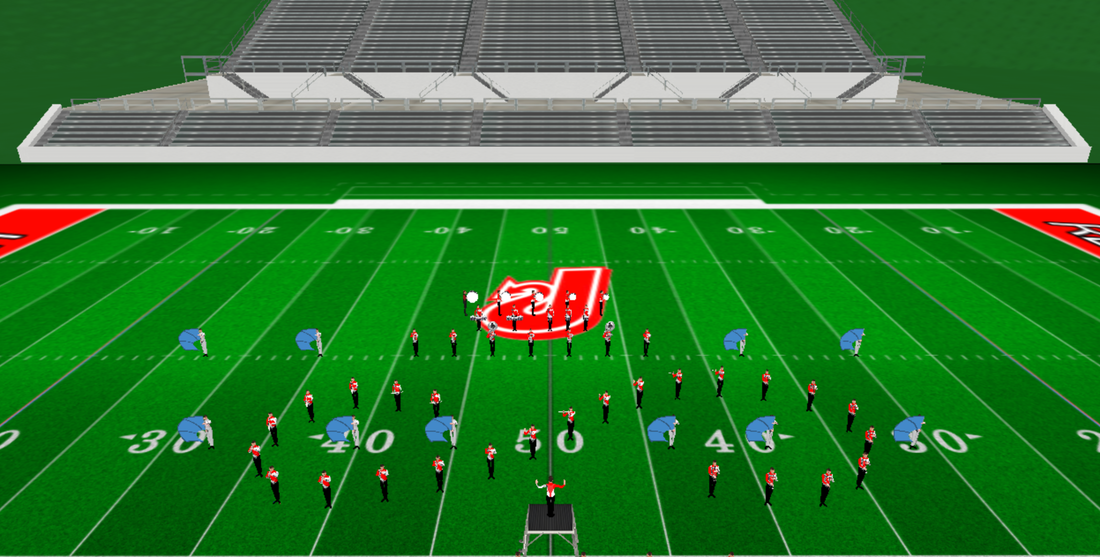
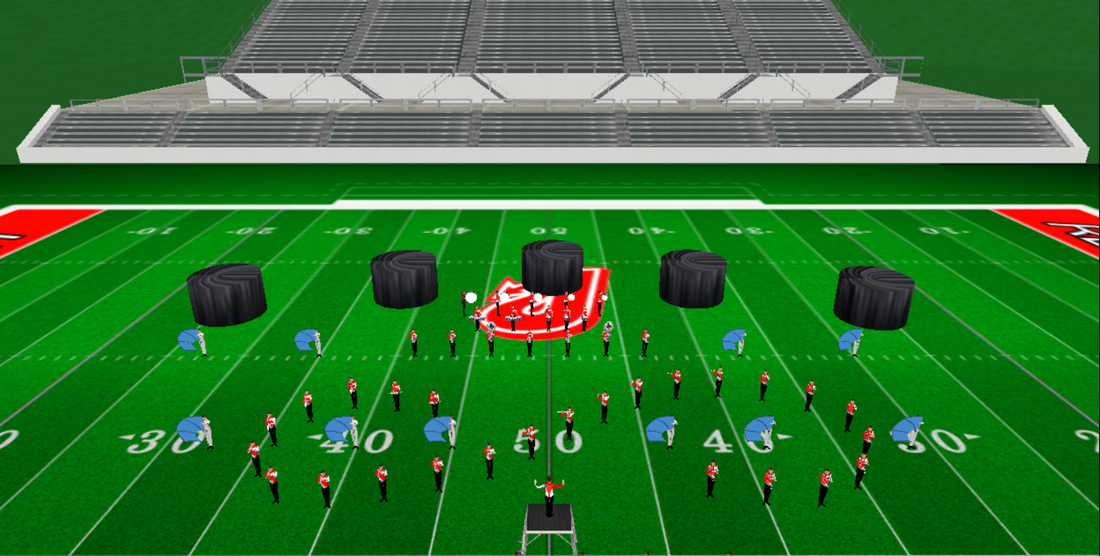
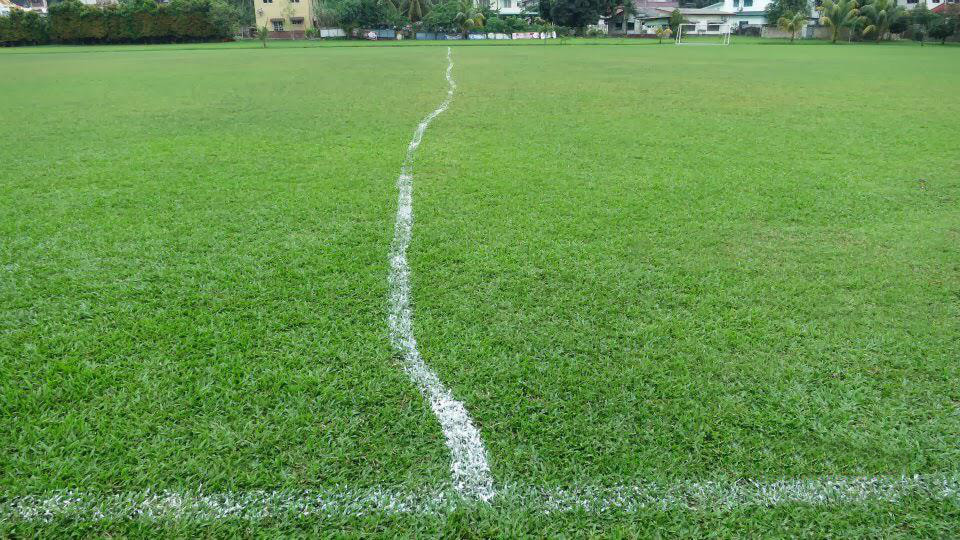


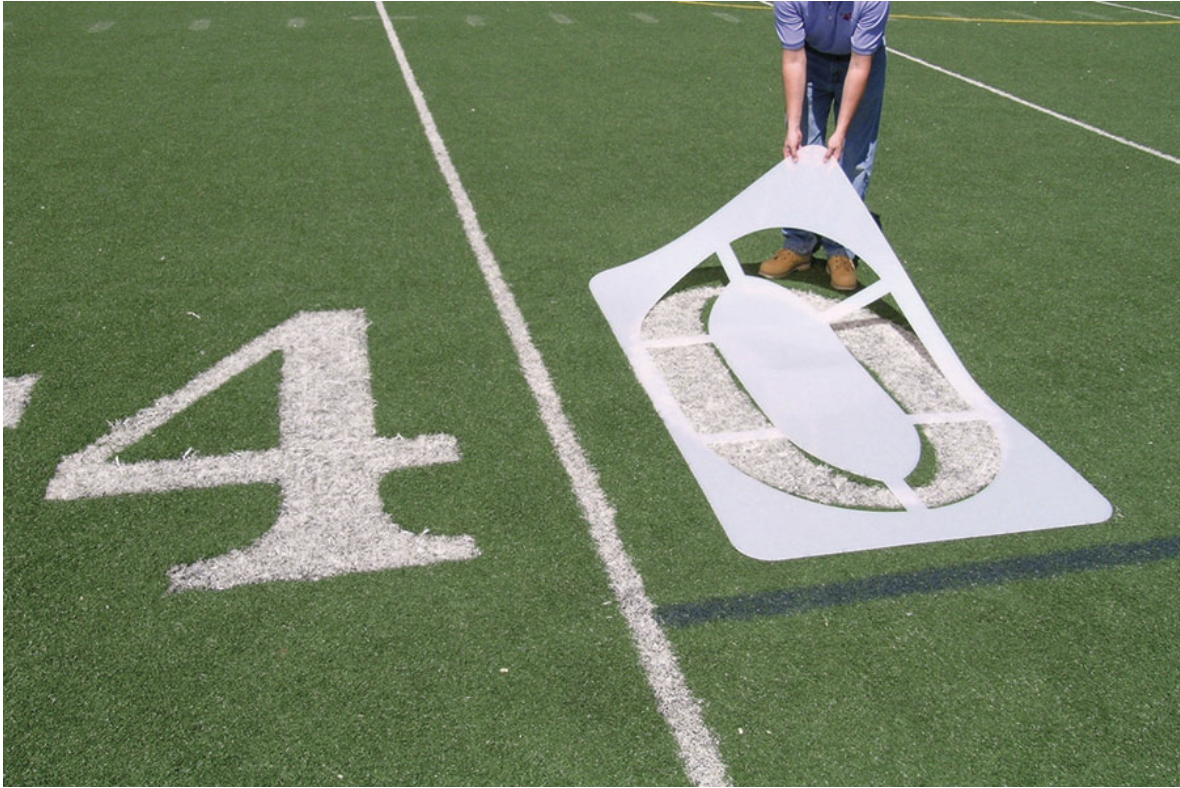

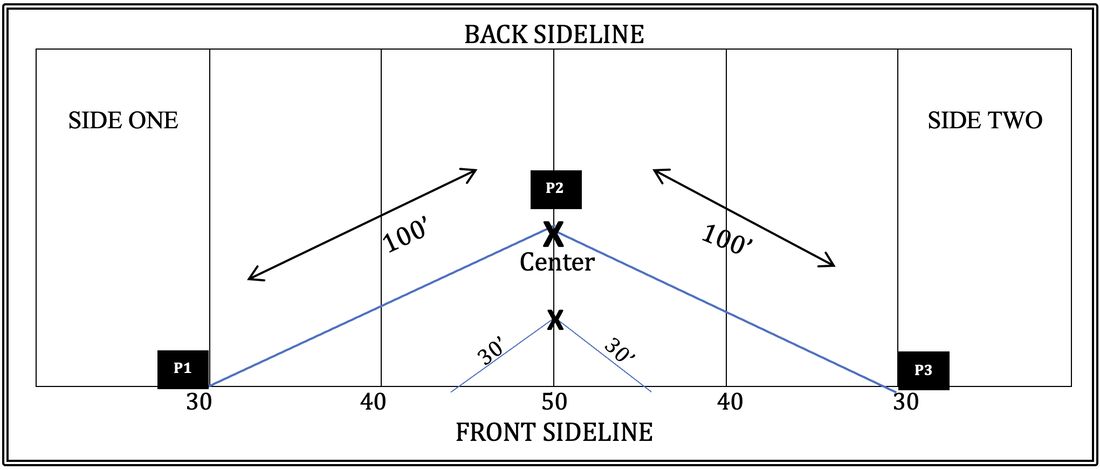

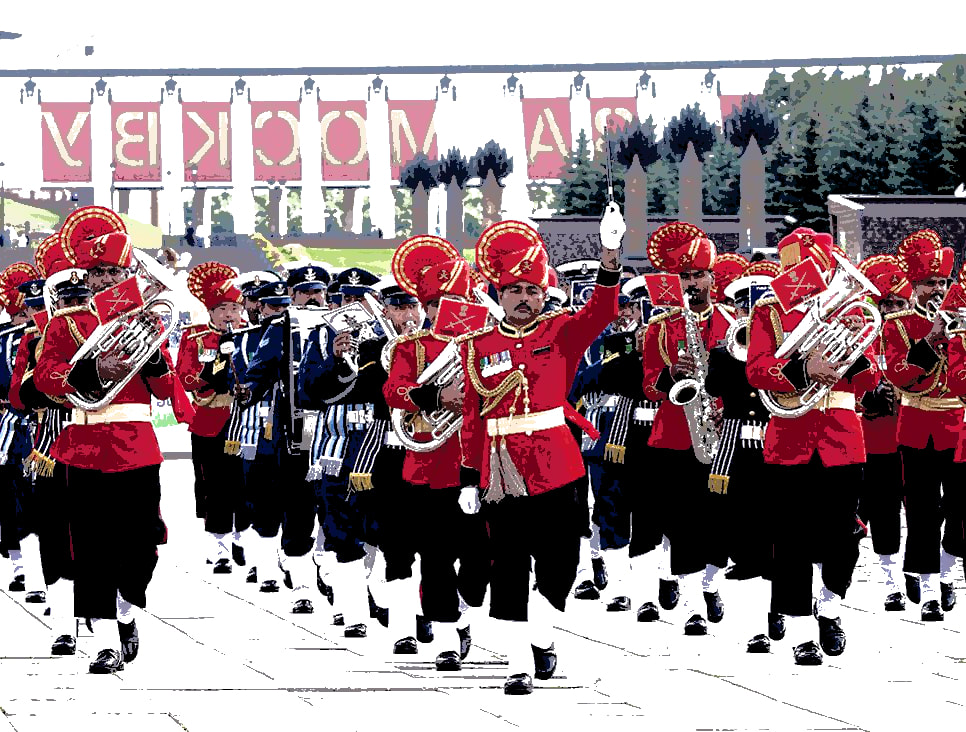
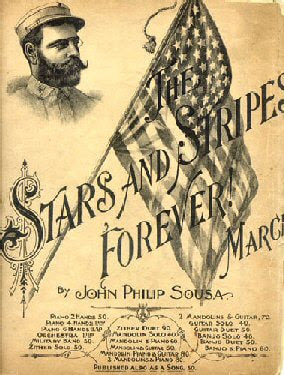


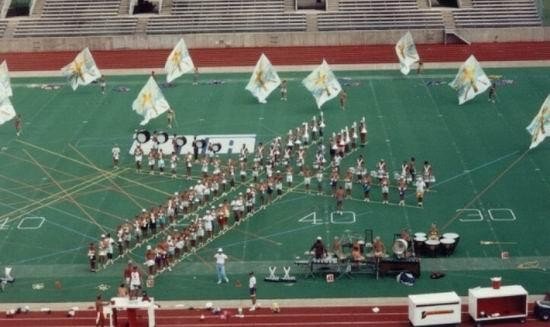



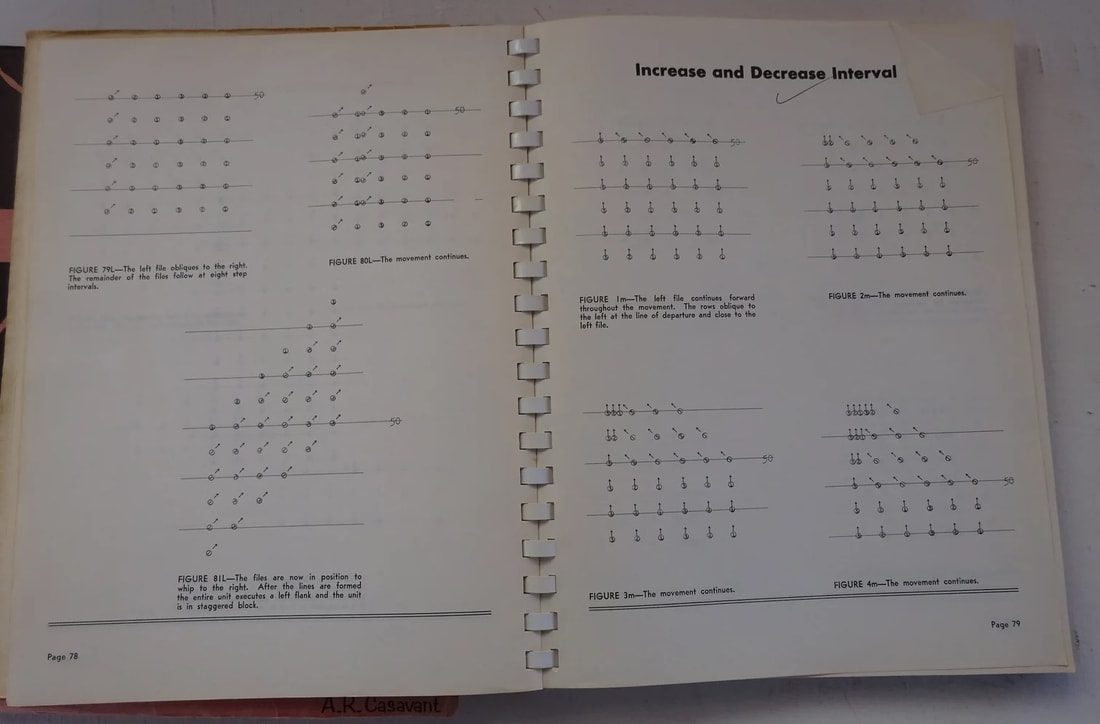










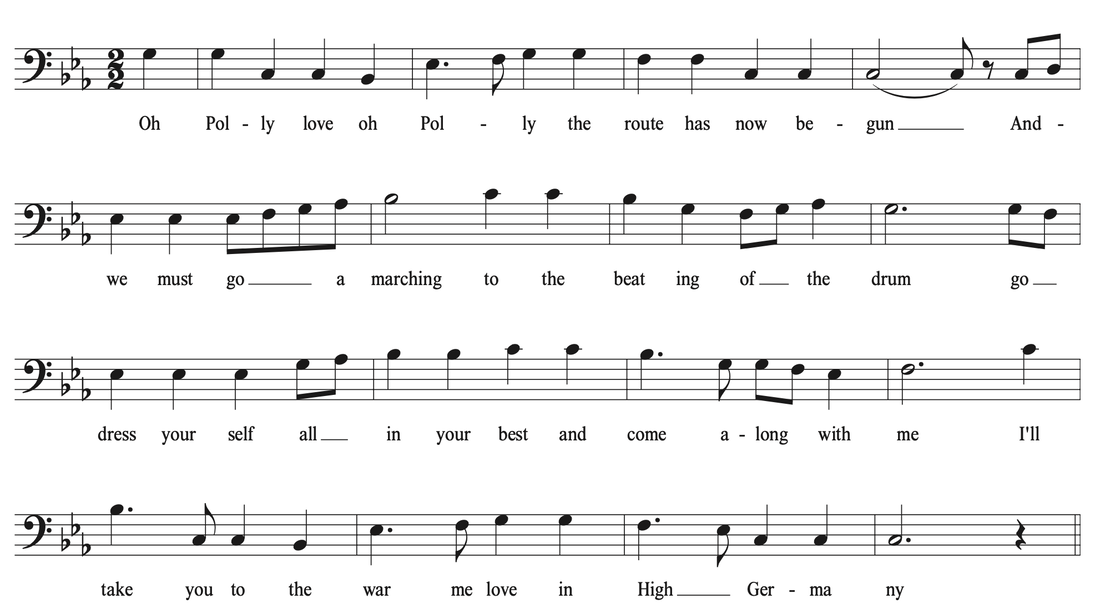
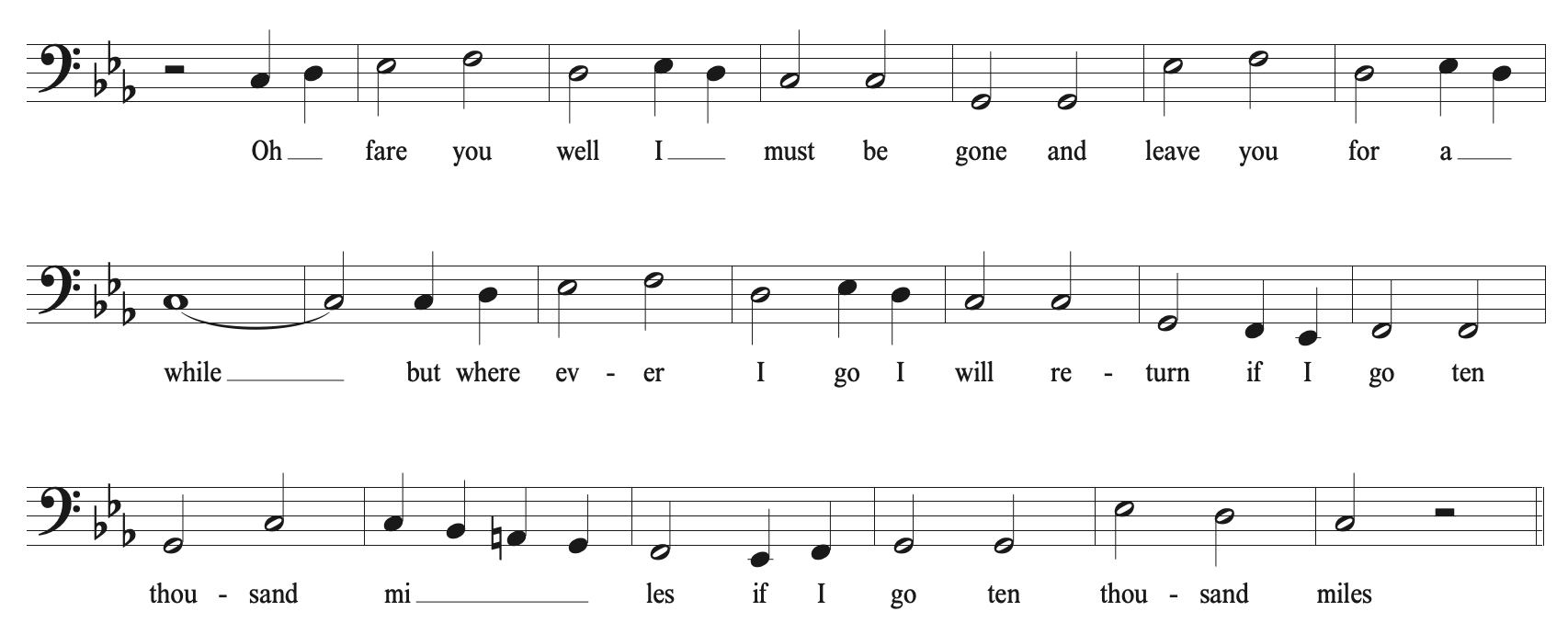

 RSS Feed
RSS Feed